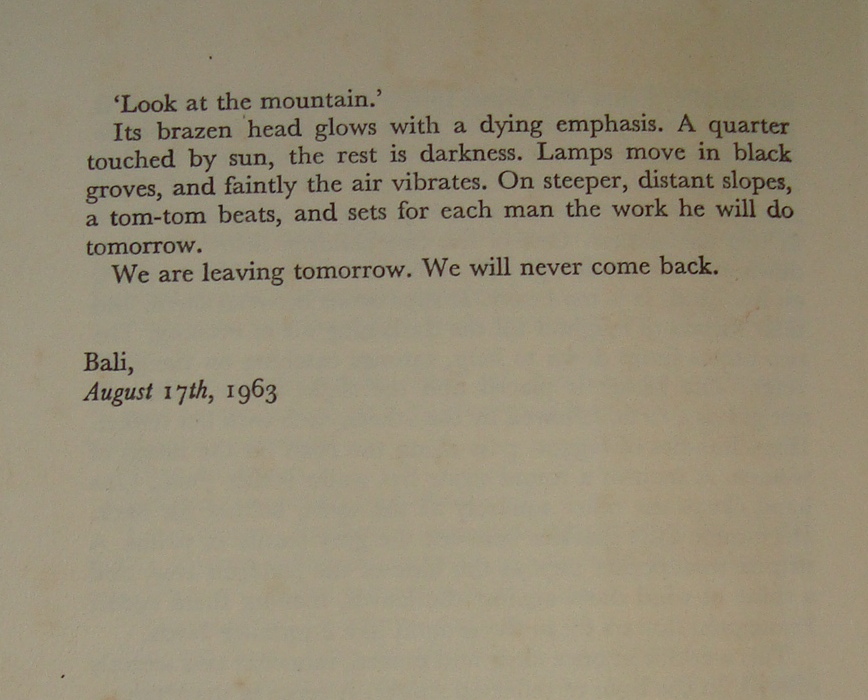"Why the mountain came to own us as it dominated the life of everyone in its shadow you would understand the moment you saw the village. We had been told of the village by a missionary. He had never lived there, and indeed, he would have made no progress. His acquaintance with the house was confined to a visit to a painter who had once installed himself there and who, the good man remarked disparagingly, 'lived like a Balinese.' It was now five years since he had left, perhaps longer. The missionary held out no hopes of the house: nothing more than a roof could be expected, and he had heard that that was leaking. It was, he stated, the most beautiful place in the world. The name of the village was Iseh. ..."
Do good books come in pairs? Only a few days ago I discovered At the Top of the Muletrack, and today I found another rare Travel Book Club edition, The Night of Purnama ['Purnama' is Balinese for 'full moon'].
The writer, Anna Mathews, and her husband Denis chose to make their home in Iseh, a remote hamlet of thatch and bamboo houses set between palm-groves and rice terraces on the island of Bali. Their house faced the holy mountain of Bali, Gunung Agung, a volcano which had been extinct for longer than anyone knew. Suddenly, in February 1963, after they had been in Bali for just seven months, the extinct volcano Gunung Agung came to life. During the following six months it poured out ash, lava and volcanic bombs, burying whole villages, destroying rice fields, killing nearly 2,000 people, and bringing terror and famine to hundreds and thousands more.
Published in 1965, the book may never have seen the light of day had it not been for these fortuitous circumstances:
The house the Mathews lived in, just eight kilometers from the summit, was of course what is today known as the "Walter Spies House". Walter Spies, a German painter who settled in Bali 1927, built in 1937 what he described as a "mountain hut" and lived there after he had grown weary of his increasingly hectic social life. His mountain retreat was to become the setting of some of his most beautiful and atmospheric paintings, including "Iseh im Morgenlicht 1938".
Despite his desire to escape from a constant stream of visitors, Spies still used to receive guests at Iseh, including the Austrian novelist, Vicki Baum; musician, Colin McPhee; and Swiss artist, Theo Meier. When Hitler invaded Holland in 1940, all German nationals in Indonesia were arrested as enemy aliens, Spies was interned for twenty months, before meeting his death in 942 aboard a prisoner-of-war ship that was sunk by a Japanese torpedo boat while crossing the Indian Ocean.
This book, apart from having this connection with a famous painter who so greatly influenced modern Balinese art, is a document of a Bali that is splendid, lavish, illogical, moving and maddening. Even more, it is a unique eye-witness account of a volcanic eruption and I am savouring every one of its 220 pages.




